Chicago’s working class were expecting a day in luxury and instead many of them experienced a terrifying and tragic calamity on the Chicago River. While most people are familiar with the Titanic (1) and Lusitania (2) disasters, many people have never heard of the Eastland Disaster (3).
Counting passengers only, 832 perished on the Titanic.
844 passengers died on the Eastland.
YES, more than on the Titanic. (832 passengers and 685 crew members.)
Even lesser known is that the majority of the passengers that day were Czechs.
The SS Eastland rolled onto its side in the Chicago River, only 20 feet from shore.
Sometimes referred to as the “Blue Collar Titanic”, this colorized short video shows the scope of this tragedy.
Why do we know so much about Titanic’s sinking and yet so little about the Eastland disaster?
Why was no one ever held responsible for this horrific catastrophe?
Perhaps because it is absolutely unbelievable that a docked vessel, surrounded by 10,000 people could be the setting for a calamity of such proportions.
On the 24th of July, 1915, the SS Eastland – a passenger steamer – capsized in the Chicago River. Conditions at the time were perfectly calm, the water placid.
There was no fire, no impact from another ship, no explosion. There was barely even any wind.
In fact, the ship was still tied up to the dock.
So how could this happen?
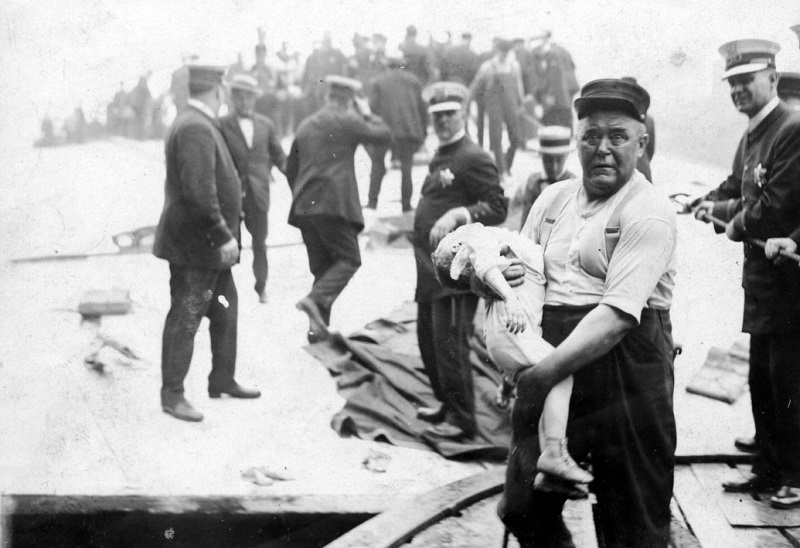
Historians say help was on hand almost instantly.
The water was relatively shallow at the dock and the boat didn’t even fully sink.
Yet despite all this, the Eastland disaster would turn into one of the deadliest in Chicago’s history.
Tragically, many of the passengers were Czechs.
The SS Eastland was a passenger ship based in Chicago and used for tours. On July 24th, 1915, the ship rolled over onto its side while tied to a dock in the Chicago River. A total of 844 passengers and crew were killed in what was the largest loss of life from a single shipwreck on the Great Lakes.
Sadly, the seamen who worked on the SS Eastland knew her to be an exceptionally unstable ship.
The Eastland was built in 1902 to carry 500 people for lake excursions and to haul produce on the return trips to Chicago. The boat had no keel, was top-heavy and relied on poorly designed ballast tanks in the hold to keep it upright. Repeated modifications increased the vessel’s speed and passenger capacity—and made it less stable.
The Eastland had numerous documented problems and complaints for years prior to her capsizing. The primary problems appeared to be a poorly designed keel and a horrible ballast system that could not adequately balance the ship.
So if that was known, why put all those people in danger?
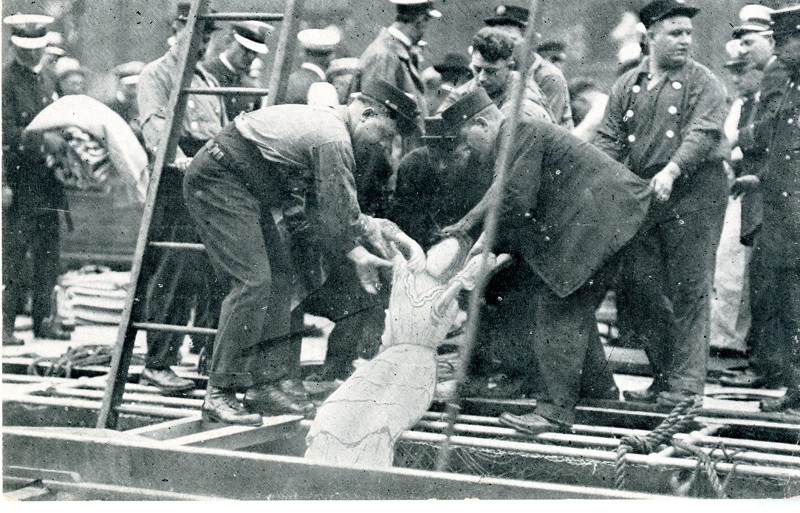
Some have said that the primary causes of the disaster were the intense overcrowding of the ship combined with the preexisting design problems. After the official report on the “sinking”, it was established beyond doubt there were significantly more aboard than the allowable 1,400 for which the ship was rated.
Contemporary experts concluded at least 2,500+ people had boarded with or without tickets.
That’s right – almost twice the amount that could have safely boarded.
Despite the cool, damp weather, a total of 2,573 passengers and crew crowded aboard the SS Eastland that morning.
Almost more unbelievable is that more than 7,000 tickets were sold.
The SS Eastland was one of five vessels which were chartered to carry Western Electric Hawthorne Works workers and their families on a day-long outing from downtown Chicago to a park 38 miles across Lake Michigan to the southeast. The Eastland was the first boat scheduled to leave, and passengers were encouraged to get there early.
How were all those people able to get on board one ship?
The following video shows terrifying images from the last moments on the ship.
As the Eastland filled with passengers between 7:10 and 7:15 a.m., it began to list to port, away from the wharf. The movement didn’t seem to alarm the partygoers, but it caught the attention of the harbormaster and some other observers on land.
At 7:23, it listed even further to port. Water poured through the open gangways into the engine room. The crew there, realizing what was about to happen, scrambled up a ladder to the main deck.
At 7:28 a.m., the Eastland listed to a 45-degree angle. The piano on the promenade deck rolled to the port wall, almost crushing two women; a refrigerator slid to port, pinning a woman or two beneath it. Water poured into open portholes in the cabins below deck.

The most deadly shipwreck in Great Lakes history—was under way.
Within two minutes after it listed 45 degrees to port, it rolled over at 7:30 a.m. By that time, the Eastland was lying on its side in 20 feet of murky water, still tied to the dock.
It rolled to its side so quickly, there wasn’t any time to launch the lifesaving equipment. As the boat settled on its side, many passengers simply climbed over the starboard railing and walked across the exposed hull to safety, never even getting their feet wet.
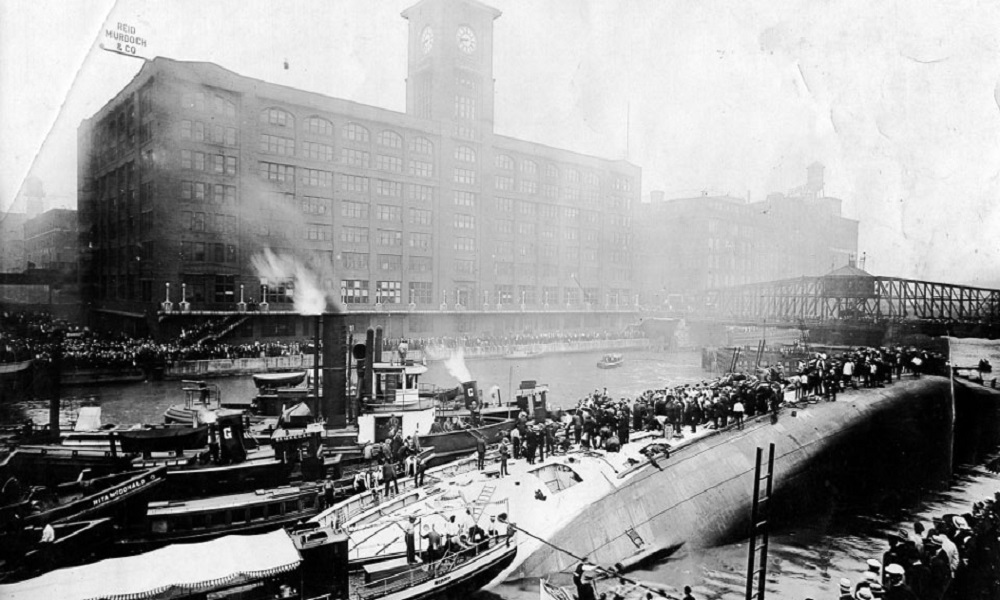
They were the lucky ones.
The rest were in absolute chaos. The people were struggling in the water, clustered so thickly that they covered the surface of the river. Onlookers recalled that the screaming was the most horrible of all. Many passengers were cut and bleeding. They were being dragged out through portholes and hanging onto passing crates in the water. Some just seemed to sink into the dark water and disappear.
The following is a June 1976 interview with Frank Blaha, one of the survivors of the Eastland disaster.
Because there were approx. 10,000 people at the docks that day, the crowding was terrible and only added to the chaotic confusion. By 8 a.m., almost all of the survivors had been pulled from the river.
Then came the gruesome task of locating and removing bodies.
Most of them were the bodies of women and children.
As the casualties mounted, the nearby Second Regiment Armory was converted to a makeshift morgue.
The corpses were placed in rows of 85 as the identification process began. Just before midnight, the public was admitted, 20 at a time, to look for family members.
After the Eastland rolled, 844 passengers died on a sluggish urban river, 20 feet from the dock.
Seventy percent of them were under the age of 25.
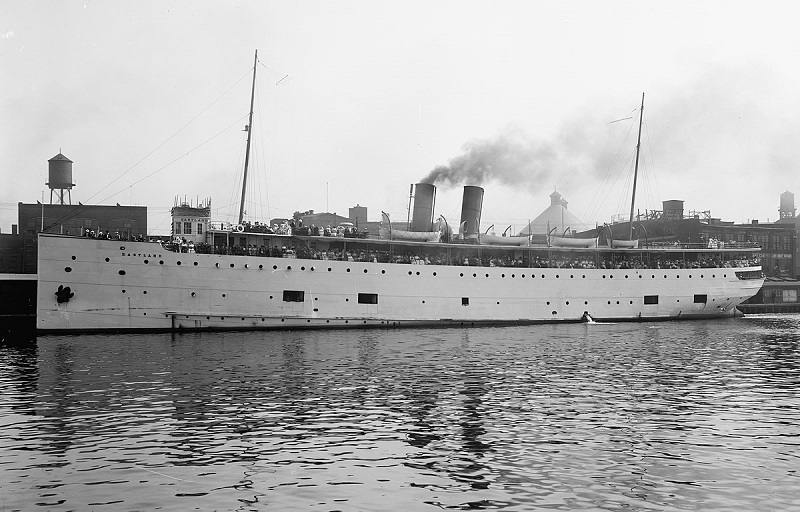
Ironically, some still argue that it was the alterations and the addition of more lifeboats and rafts after the Titanic sank that made the Eastland so unstable so that it rolled over in the Chicago River!
You see, the 1912 sinking of the Titanic gave rise to a “lifeboats-for-all” movement among international marine safety officials. In the United States, Congress passed a bill requiring lifeboats to accommodate 75 percent of a vessel’s passengers, and in March, 1915, President Woodrow Wilson signed what became known as the LaFollette Seaman’s Act.
At the time of the disaster, the Seaman’s Act was facing repeal by Congress because of the pressure of the steamship industry against the expenses incurred by them to bring their ships into compliance. The act had been passed because of a series of shipping disasters, most of them freight ships, on the Great Lakes. Other disasters, notably the burning of the General Slocum, contributed to public support for reform of a very corrupt federal inspection system.
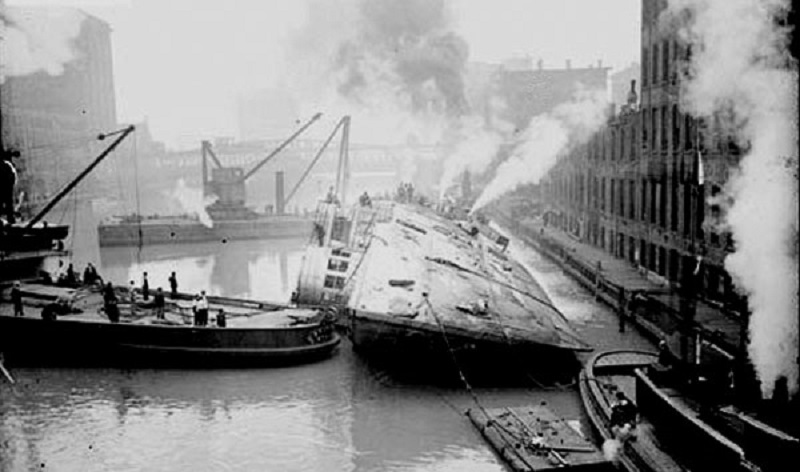
The act was primarily passed because of the demands of the seamen who worked on these ships. The truth was it was a general practice in the shipping industry, both freight and passenger, to overload ships and equip them with only the absolute minimum in safety equipment, thereby maximizing profit and minimizing cost. It was equally true those who had oversight powers rarely, if ever, exercised them because of corruption with the shipping industry.
Once the Eastland tragedy struck, all talk of repeal of the act ended and the steamship industry slowly became adequately regulated.
As a result, there have been far fewer ship disasters since that time.
The following video covers first hand accounts from newspaper articles and survivors.
Most of the Czechs aboard were employed by the Hawthorne Works.
The Hawthorne Works complex was built at the intersection of Cicero Avenue and Cermak Road and was opened in 1905. Hawthorne Works was named for Hawthorne, Illinois, a small town that was later incorporated as Cicero. The facility consisted of several buildings and contained a private railroad, Manufacturers Junction Railroad, to move shipments through the plant to the nearby Chicago, Burlington and Quincy Railroad freight depot. In the first decades, the factory complex was significantly expanded.
The Hawthorne Works produced a large output of telephone equipment. In addition, Western Electric produced a wide variety of consumer products and electrical equipment, such as refrigerators. The works employed up to 45,000 employees at the height of operations. Workers regularly used bicycles for transit within the plant.
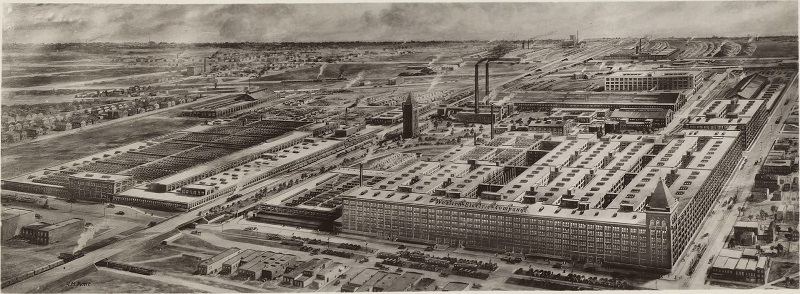
The Hawthorne Works was in operation until 1983, when it was closed as a result of the divestiture of AT&T and the breakup of the Bell System. It was purchased in the mid-1980s by the late Donald L. Shoemaker and replaced with a shopping center. One of the original towers remained at the corner of 22nd Street and Cicero Ave.
Due to its significance in industrial manufacturing in the United States, the Hawthorne Works was the site of well-known industrial studies. The Hawthorne effect is named for the works. North American Quality pioneer Joseph Juran referred to the Hawthorne Works as “the seed bed of the Quality Revolution”.
Of the Czech immigrants working at the Hawthorne works, 220 were among those killed in the capsizing of the SS Eastland in Chicago on July 24, 1915; they were preparing to depart on a company-sponsored excursion at the time.
The devastating photo below shows how the excursion ended tragically.
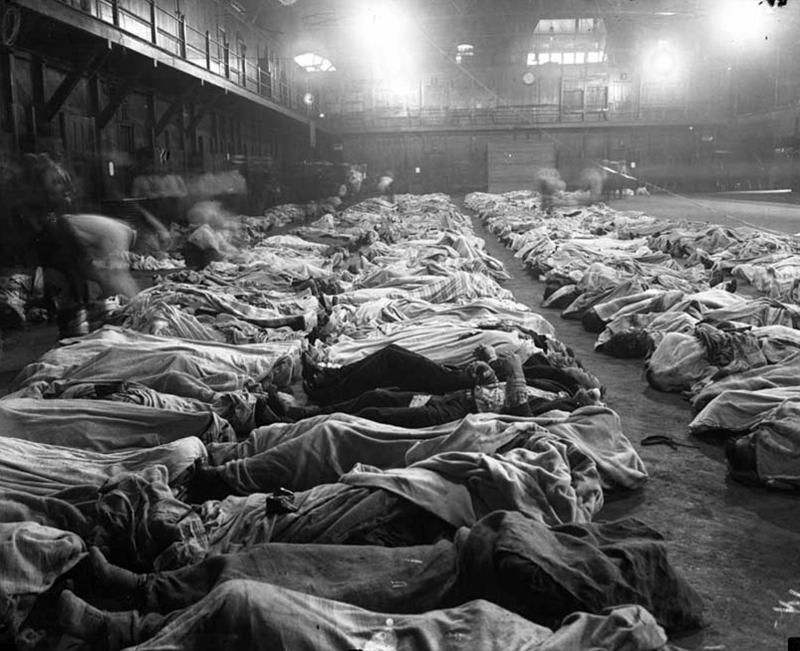
After the disaster, the SS Eastland was salvaged and sold to the United States Navy.
After restorations and modifications, Eastland was designated a gunboat and renamed USS Wilmette. She was used primarily as a training vessel on the Great Lakes, and was scrapped after World War II.
We recommend you watch the complete PBS Documentary Special (50 minutes) at the following link:
https://www.pbs.org/video/the-eastland-disaster-04xrn4/
If you are in the Chicago area, make sure to visit Western Electric’s Hawthorne Works Museum at Morton College. The Hawthorne Works Museum at Morton College preserves the few remaining artifacts from a time when good industrial jobs provided millions a gateway to the American Dream. To arrange a museum tour for students, community groups or individuals, call (708)656-8000, ext. 2320. And, admission is free.
To learn more about the victims, an estimated 65 victims are buried in Forest Home Cemetery. You can learn about each victim and see either their photo or their gravestone by clicking here.
Other victims are buried at Concordia Cemetery, Forest Park; Jewish Waldheim, Forest Park; Queen of Heaven, Hillside; and the Bohemian National Cemetery, Chicago. The following video is a visit to the Bohemian National Cemetery and the Eastland Victim’s Memorial in Chicago, Illinois.
A virtual cemetery for the victims of the Eastland Disaster can also be seen here. 22 entire Czech families were lost in the disaster and as you scroll through the gravestones, you can find the names of the Czechs lost that horrific day.
Click here to see virtual cemetery.
You can also learn much more about this disaster through the Eastland Disaster Historical Society at this link.
This was a very, very tragic occurrence for Czechs in the Chicago area. The video below looks at the disaster 100 years later, showing recently unearthed photos from the Chicago Tribune and recently discovered film from various newsreel sources. A new look at this American maritime tragedy.
Marion A. Eichholz was the last known survivor of the 1915 Eastland disaster. She was only 3 in 1915 when her father took her in his arms and jumped into the Chicago River to escape a sinking ship, according to her recollection published online. She died on November 24, 2014, at age 102.
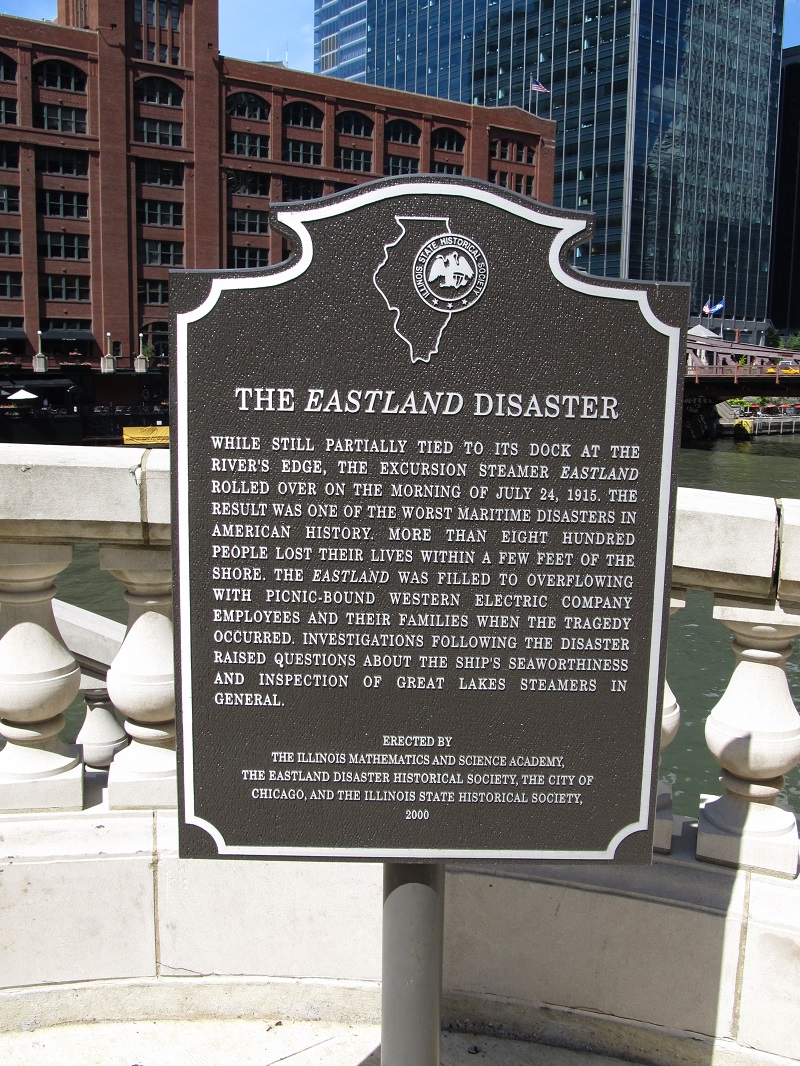
The Chicago Tribune has an interesting page dedicated to the Eastland Disaster worth looking at. You may access that by clicking here.
Most of the people were found to have died in a stairwell, which acted as a chokepoint under the water. If you have the time, listen to this one hour podcast with Michael McCarthy, author of the New York Times Bestseller “Ashes Under Water: The SS Eastland and the Shipwreck That Shook America“. He offers a fascinating glimpse into the history of the ill-fated SS Eastland and recounts the story of the tragic sinking and its aftermath, including famed attorney Clarence Darrow’s involvement in the trial that followed.
You can listen to that by clicking on the video below – it’s excellent and we HIGHLY recommend it.
There are a couple of books available on Amazon worth checking out if you would like to delve deeper into this day in history. A small portion of your purchase goes to support us if you purchase through clicking any of the links below.
Notes:
(1) RMS Titanic was a British passenger liner, operated by the White Star Line, which sank in the North Atlantic Ocean on 15 April 1912 after striking an iceberg during her maiden voyage from Southampton, UK, to New York City. Of the estimated 2,224 passengers and crew aboard, more than 1,500 died, which made the sinking possibly one of the deadliest for a single ship up to that time. It remains to this day the deadliest peacetime sinking of a superliner or cruise ship. The disaster drew much public attention, provided foundational material for the disaster film genre, and has inspired many artistic works.
(2) RMS Lusitania (named after the Roman province in Western Europe corresponding to modern Portugal) was a British ocean liner that was launched by the Cunard Line in 1906 and that held the Blue Riband appellation for the fastest Atlantic crossing in 1908. It was briefly the world’s largest passenger ship until the completion of the Mauretania three months later. She was sunk on her 202nd trans-Atlantic crossing, on 7 May 1915, by a German U-boat 11 miles off the southern coast of Ireland, killing 1,198 passengers and crew.
(3) SS Eastland was a passenger ship based in Chicago and used for tours. On 24 July 1915, the ship rolled over onto its side while tied to a dock in the Chicago River. A total of 844 passengers and crew were killed in what was the largest loss of life from a single shipwreck on the Great Lakes.
Sources: 1, 2, 3, 4, 5, 6, 7, 8.
Thank you for your support – We appreciate you more than you know!
We know that you could spend hours, days, weeks and months finding some of this information yourselves – but at this website, we curate the best of what we find for you and place it easily and conveniently into one place. Please take a moment today to recognize our efforts and make a donation towards the operational costs of this site – your support keeps the site alive and keeps us searching for the best of our heritage to bring to you.
Remember, we rely solely on your donations to keep the project going.
Thank you in advance!
If you have not already subscribed to get TresBohemes.com delivered to your inbox, please use the form below now so you never miss another post.






















Thank you for creating this article, Kytka: it is very interesting and informative. I was not aware of this unfortunate historical event affecting Czechs in Chicago Illinois.